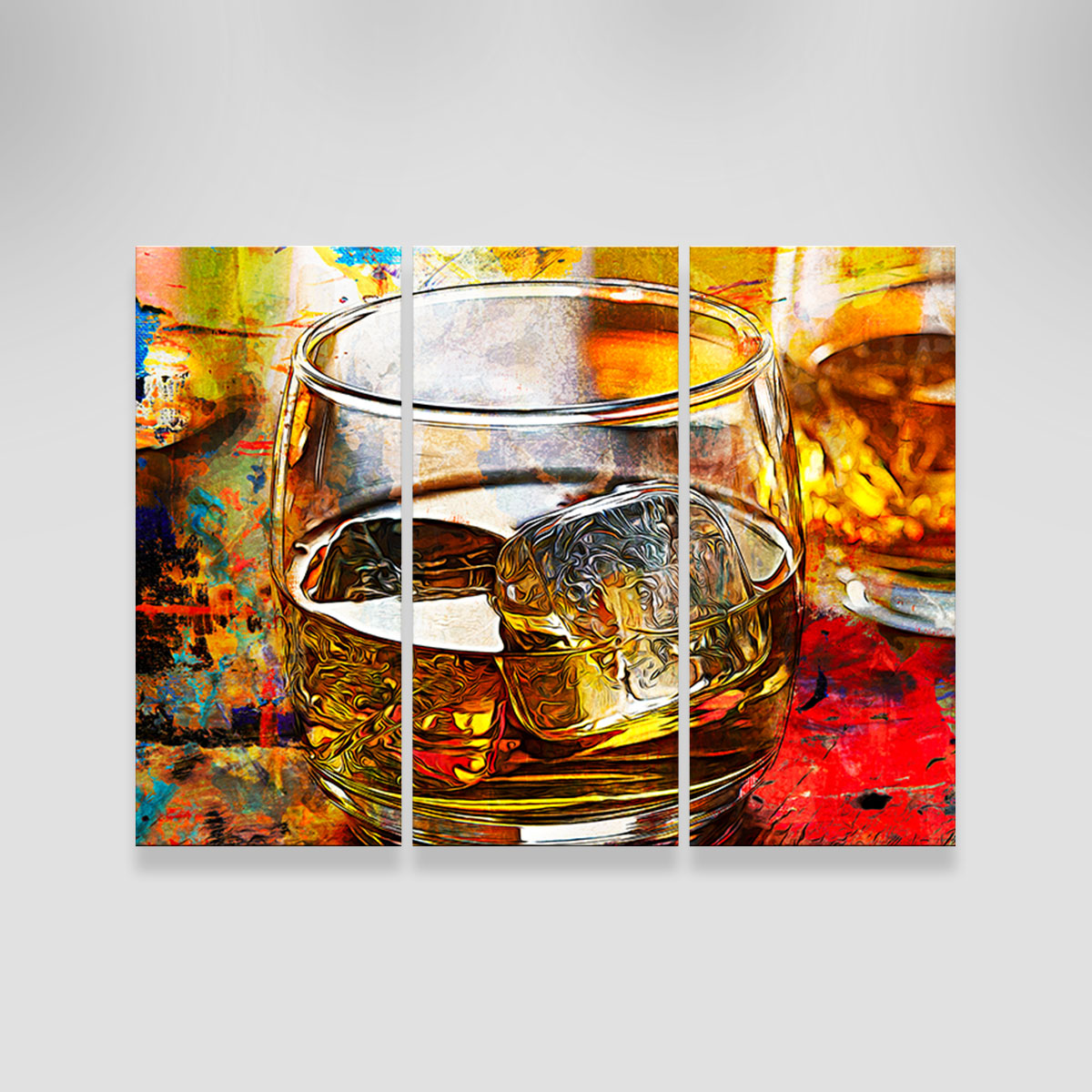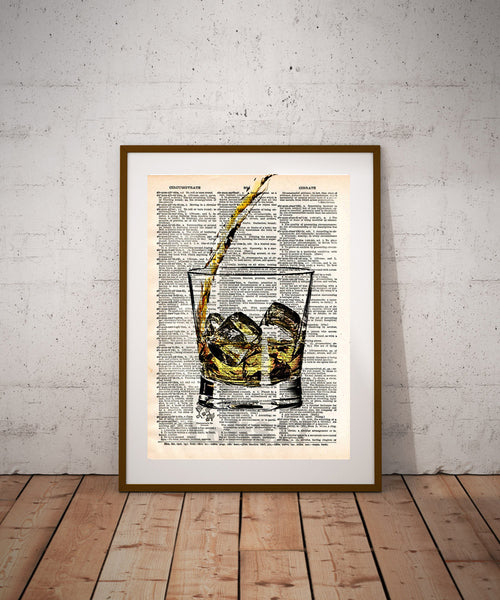Limited Edition: Discover Exclusive Bourbon Art Parts for Collectors
Limited Edition: Discover Exclusive Bourbon Art Parts for Collectors
Blog Article
The Value of Whiskey Art in Celebrating Heritage and Craftsmanship in the Beverage Industry
The intricate relationship in between scotch art and the event of heritage and workmanship within the beverage sector can not be overemphasized. Via attentively made bottles and labels, scotch brands envelop their historic roots and the artisanal abilities that define their manufacturing approaches.
The Historic Origins of Whiskey
At the heart of scotch's allure lies an abundant tapestry of historic roots that map back to ancient worlds. The beginnings of whiskey can be linked to the distillation methods of the Sumerians and Babylonians around 2000 BCE, where early forms of fermented grain beverages started to arise. It was in the Center Ages that the art of purification developed considerably, particularly in Ireland and Scotland, leading to the creation of scotch as we recognize it today.
The term "scotch" itself originates from the Gaelic word "uisce beatha," indicating "water of life." This phrase highlights the cultural significance of scotch in Celtic cultures, where it was often linked with routines, celebrations, and public bonding. By the 15th century, distillation became an identified craft within reclusive neighborhoods, leading the way for the facility of lawful distilleries.
As profession paths expanded, bourbon's popularity grew, going beyond regional boundaries and recording the rate of interest of lovers worldwide. Realism Art. This historic journey reflects not just the craftsmanship behind whiskey manufacturing yet also its important function in social and social contexts, noting it as a significant drink throughout background
Artistic Expression in Branding
Scotch branding stands as an engaging crossway of creativity and commerce, where aesthetic identification plays an important function fit consumer understanding. The aesthetic appeals of bourbon labels, product packaging, and advertising and marketing materials reflect not just the brand name's tale but also its core values and heritage. Through imaginative expression, distilleries share a story that resonates with customers, stimulating feelings and triggering links.
The use of color, typography, and images in branding offers to distinguish items in a saturated market. For instance, traditional concepts might stimulate a sense of credibility and craftsmanship, while contemporary layouts can symbolize development and forward-thinking. This tactical imaginative instructions enhances brand name recognition and loyalty, enabling consumers to create an individual connection with the scotch they choose.
Moreover, imaginative expression in branding often serves as a celebration of regional heritage. Distilleries regularly include local icons or historic references right into their layouts, producing a feeling of area that welcomes consumers to take part in a broader social experience. Ultimately, the creativity behind whiskey branding not just improves visual allure but additionally enriches the overall story of the brand, fostering a much deeper appreciation for the craftsmanship and heritage embedded in each bottle.
Craftsmanship in Container Style
The artistry evident in scotch branding prolongs past aesthetic identification to include the craftsmanship entailed in bottle layout. Each bottle works as a vessel not simply for the spirit within, however likewise for the tale it outlines its top quality, beginning, and custom. The style process requires careful interest to detail, as components such as material, closure, and form add considerably to article source the general understanding of the whiskey.
Craftsmanship in container design involves choosing premium glass that can enhance the scotch's color and clarity, while also providing a tactile experience for the customer. The shape of the container should be both cosmetically appealing and functional, usually showing the heritage of the brand. Many distilleries decide for special shapes or embossed logo designs that stimulate a sense of authenticity and history.
Moreover, the tag design and typography play a critical function in connecting the brand's story. Bourbon Art. A well-crafted bottle not just captivates the customer's eye however additionally strengthens the brand name's commitment to high quality and custom. In this method, the craftsmanship of container layout ends up being a vital aspect of the bourbon experience, merging virtuosity with an extensive regard for heritage
Social Significance of Scotch Art
Celebrating tradition and workmanship, the social relevance of whiskey art transcends simple visual appeals, intertwining with the social and historical narratives of the areas where it stems. Each bottle functions as a canvas, showing the distinct tales, folklore, and customs that have shaped regional whiskey-making techniques. The elaborate styles usually reflect the heritage of the distillers, incorporating symbols and concepts that resonate with the culture and values of their communities.

On top of that, whiskey art plays a crucial function in public celebrations and parties, offering as a concrete web link in between individuals and their shared experiences. By valuing the artistry in bourbon packaging, consumers cultivate a much deeper understanding and regard for the craft, inevitably enriching their satisfaction of the drink itself.
Modern Trends in Whiskey Presentation
Over the last few years, the presentation of whiskey has advanced to mirror contemporary preferences and fads while still recognizing typical craftsmanship - Whiskey Art. Distilleries are increasingly concentrating on visual aspects that boost the total drinking experience, connecting the space in between heritage and modernity
Cutting-edge bottle designs have emerged, frequently including lasting materials and artistic labels that tell compelling stories. Many brands now work together with regional musicians, infusing their items with one-of-a-kind aesthetic expressions that resonate with customers. Furthermore, limited-edition launches are typically packaged in collectible containers, adding worth and allure for aficionados.

Final Thought
To conclude, bourbon art serves as a crucial channel for expressing the heritage and craftsmanship inherent in the drink industry. With complex branding, ingenious container layouts, and culturally significant creative aspects, scotch brand names properly honor their traditions and get in touch with consumers. This creative narrative not only elevates the appreciation of scotch however additionally reinforces community identification and satisfaction among producers. Inevitably, scotch art plays an important duty in preserving and celebrating the rich cultural tapestry of whiskey-making.


Craftsmanship in bottle layout includes picking high-grade glass that can boost the whiskey's shade and clarity, while likewise supplying a tactile experience for the customer. In this means, the craftsmanship of container design becomes a crucial aspect of the whiskey experience, combining artistry with a profound regard for heritage.
In their explanation final thought, scotch art offers as an important channel for sharing the heritage and craftsmanship inherent in the beverage market.
Report this page